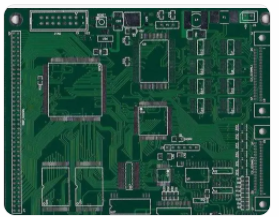[The original type of PCBA patch]
In PCBA processing plants, the important characteristics of the placement machine are accuracy, speed, and adaptability. Often adaptability is the ability of the placement machine to adapt to different placement requirements. The following technicians talk about the adaptability of the placement machine.
(1) The type of components that can be mounted. Mounters with a wide range of component types are more adaptable than mounters that can only mount SMC or a small amount of SMD. The main factors that affect the type of components placed by the placement machine are placement accuracy, placement tools, compatibility of the centering mechanism and components, and the number and types of feeders that the placement machine can accommodate.
Some placement machines can only accommodate a limited number of feeders, while some placement machines can accommodate most or all types of feeders, and the number of feeders that can be accommodated is also larger. Obviously, the latter is more suitable than the former Good sex. The holding capacity of the feeder on the placement machine is usually expressed by the number of 8mm tape feeders that can be installed on the placement machine.
(2) Adjustment of placement machine.

When the placement machine converts from assembling one type of PCB to assembling another type of PCB, reprogramming of the placement machine, replacement of the feeder, adjustment of the PCB transfer mechanism and positioning table, and adjustment of the placement head Adjustment work such as adjustment/replacement.
1. Program the placement machine. Placement machines are commonly used in two programming methods, manual teaching programming and computer programming. Low-end placement machines often use manual teaching programming, and the more advanced placement machines use computer programming.
2. Replacement of feeder. In order to reduce the time it takes to replace the feeder, the common method is to use the "quick release" feeder, and the faster method is to replace the feeder rack so that the feeder for each type of PCB component is Mounted on a separate feeder rack for easy replacement.
3. Adjustment of PCB transfer mechanism and positioning table. When the size of the replaced PCB is different from the size of the currently mounted PCB, the width of the PCB positioning table and the transfer mechanism for conveying the PCB should be adjusted. The automatic placement machine can be adjusted automatically under program control, and the lower-end placement machine can be adjusted manually.
4. Adjust and replace the placement head. When the type of components to be mounted on the PCB exceeds the mounting range of a placement head, or when the PCB type is changed, the placement head is often replaced or adjusted. Most placement machines can automatically perform the replacement/adjustment process under program control, while low-end placement machines use manual replacement and adjustment operations.
[The impact of PCBA patch]
Virtual soldering is a common problem in PCBA patch processing. Sometimes after welding, it may seem that the front and rear steel strips are welded together, but in fact they have not reached the level of integration. The strength of the joint surface is very low. The welding seam has to go through various complicated processes on the production line. Sheet processing especially has to go through the high-temperature furnace zone and the high-tension tension-correction zone. Therefore, the welding seam of the virtual welding is very easy to cause broken belt accidents on the production line, which has a great impact on the normal operation of the production line.
The essence of virtual welding is that the temperature of the joint surface of the weld is too low during welding, and the size of the nugget is too small or even to the extent of melting, but it has reached a plastic state. After rolling, it is barely joined together, so it looks good., Actually failed to fully integrate.
Analysis of the causes and steps of virtual welding in PCBA patch processing:
1. First check whether the weld joint surface has impurities such as rust, oil, or unevenness, or poor contact. This will increase the contact resistance, reduce the current, and the temperature of the welding joint surface is not enough.
2. Check whether the current setting complies with the process regulations, and whether the current setting does not increase correspondingly when the thickness of the product changes, resulting in insufficient current during welding and poor welding.
3. Check whether the overlap of the weld is normal, and whether the overlap of the drive side is reduced or cracked. The reduction in the amount of overlap will make the combined area of the front and rear steel strips too small, reducing the total force surface and unable to withstand greater tension. In particular, the drive side cracking phenomenon will cause stress concentration, and the cracking will become larger and larger, and it will be broken.
4. Check whether the welding wheel pressure is reasonable. If the pressure is not enough, the actual current will decrease due to excessive contact resistance. Although the welding controller has a constant current control mode, the resistance increases beyond a certain range (usually 15%). It will exceed the limit of current compensation, and the current cannot increase correspondingly with the increase of resistance and cannot reach the set value. In this case, an alarm will be issued when the system is working normally.